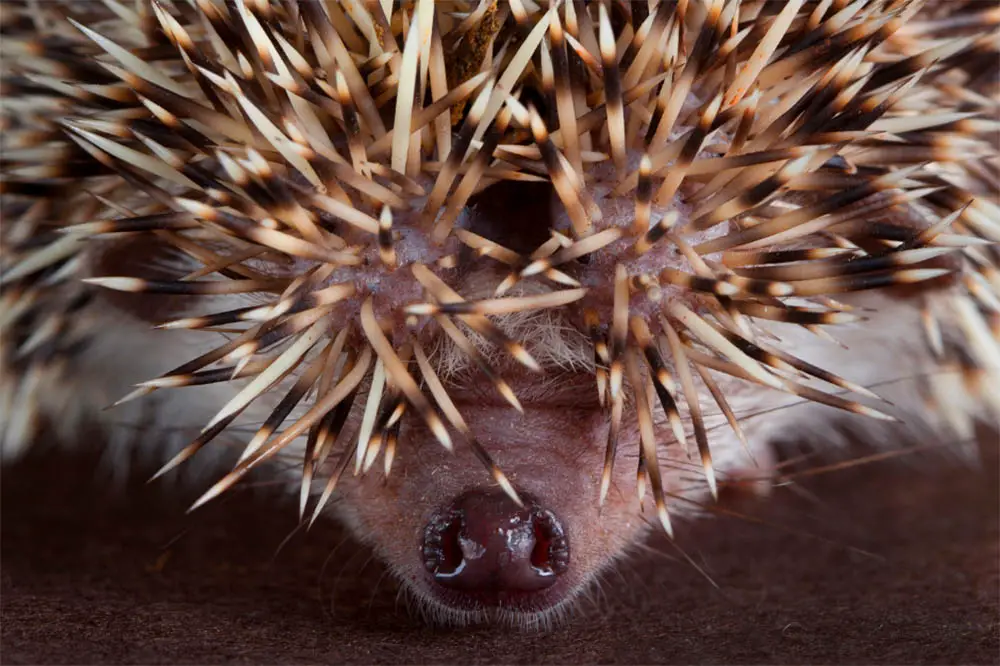Looking after a hedgehog, whether as a pet, or a rescue that you have taken in from the wild can be a daunting task, especially when you are unsure about how a hedgehog should behave, look like, and act like.
As such, it can lead you to question every little thing about them in your effort to try to make sure they are well cared for.

As strange as it may sound, one of the things we get asked most often is about your hedgehog’s nose! Turns out they are a source of concern for most of you hedgehog lovers, especially if you have never looked after one before.
In this article we are going to be exploring all there is to know about a hedgehog’s nose, looking in particular at whether a hedgehog’s nose is supposed to be wet, what this means, and how to tell if they are dehydrated (because spoiler alert: they are linked!).
So, if you are a newbie hedgehog keeper or are just curious about the shoes of these spiky cuties, this is the article for you.
Are hedgehog’s noses supposed to be wet?
Yes! We are happy to report that if your hedgehog’s nose is wet then it is likely totally fine. It is normal for a hedgehog’s nose to be wet and is indeed expected.
What we mean by this is that, similar to the nose of a dog or cat, hedgehog’s noses are always moist. This is an indicator that they are fit and healthy.
The perfect nose for a hedgehog is moist to the touch (it may even have a slight sheen to it) and is generally clean. By clean we simply mean free of lots of dryness, build-up, crusting, and bubbliness.
It is quite normal for them to have some dirt or leftover food on their shoes though, and if they don’t lick this off themselves you can give them a helping hand with a tissue.
We mentioned issues such as build-up, dryness, crusting, and bubbliness.
This is usually an indicator that something may be wrong with the hedgehog. We will explore this in more detail in the next two sections of our article. First, let’s look at what a dry nose might mean for a hedgehog….
How can you tell if a hedgehog is dehydrated?
One of the first ways you can notice if your hedgehog is dehydrated is by checking out their nose, believe it or not.
As you will know from the first section of our article, a hedgehog’s nose should be moist. This is a sign that they are hydrated and healthy.

However, a dry and dull nose could be a sign that they are dehydrated. As well as this, there are some other surefire ways you can tell if your little hedgie is suffering from dehydration.
Check if they are urinating as much as they usually do, and you can also check the color of that urine. If it is dark then they may be dehydrated.
You should check the shape of their body. If they are more oval-shaped than round then they may be dehydrated.
You should also assess their spikes (technically known as spines). These should be randomly pointed everywhere and not flat.
Flat spines mean that the hedge is likely exhausted and has not got the energy to defend themselves using their spikes. This is usually due to dehydration, especially if they also have other signs such as dark urine.
If your hedgehog is displaying signs of dehydration, call the vet. They may want you to see if they improve after giving them water. If nothing changes you should immediately take them to a vet!
What does it mean when your hedgehog’s nose is wet?
As we mentioned in the first section of this article, to some extent it is normal (in fact it is ideal) for your hedgehog’s nose to be moist. This means that they are healthy and adequately hydrated.
However, there is a difference between a moist nose and one that is drenched with wetness. A very wet nose such as one that seems to be running or bubbling can be a sign that there is something wrong with your spiky friend.
The usual culprit of a very wet nose rather than a moral moist nose is a respiratory illness.
Just like our noses run when we catch a cold or flu, so can the nose of a hedgehog. As such you must take them to the vets to get this checked out and to receive any treatment they may need.
This symptom may also be accompanied by wheezing, sneezing, crusty eyes or nose, and trouble breathing. However, other times it may be the only symptom present, hence why it is so important to get them checked out.









